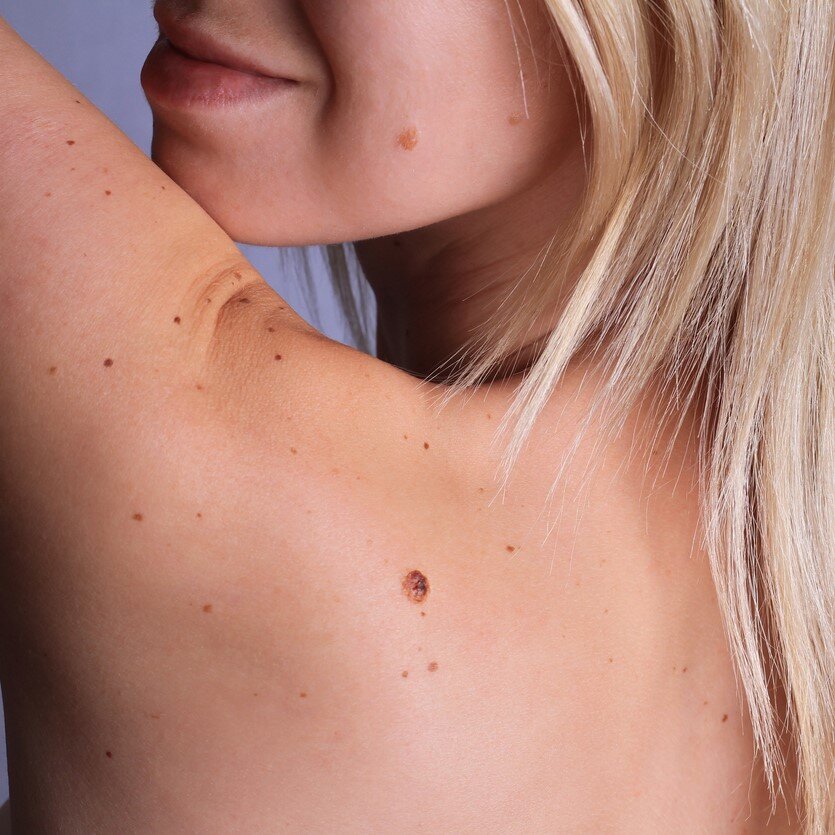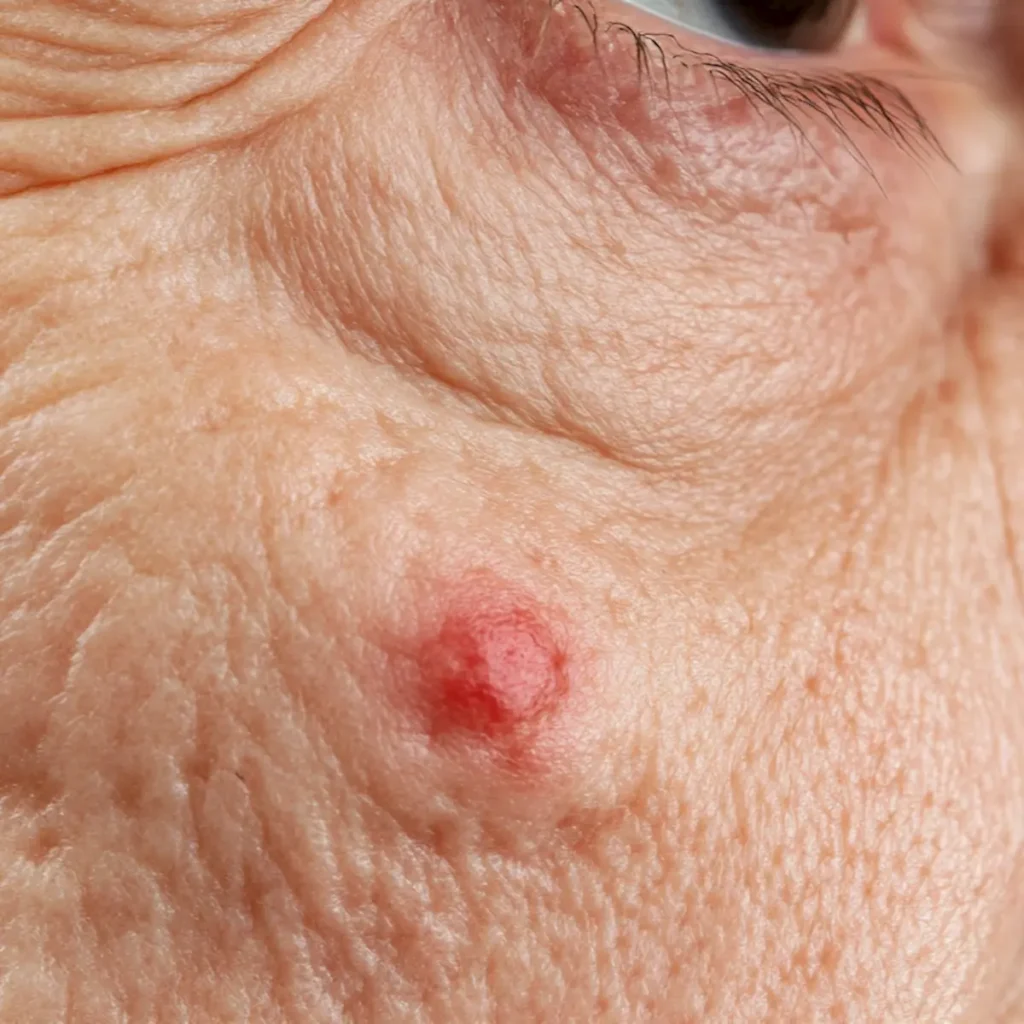At St. Louis Dermatology & Cosmetic Surgery (SLD) in Troy, MO, we help Missouri patients take proactive measures regarding skin health.
Most of us have moles, freckles, or birthmarks that seem harmless. But how can you tell the difference between a benign spot and something that could be dangerous? Skin cancer is the most common form of cancer in the U.S., and early detection is critical. Knowing when to see a dermatologist could make all the difference.
Call today (314) 834-1400 or book online to schedule your full-body skin exam.

What Is a Mole?
Moles are common growths on the skin that result from clusters of pigmented cells. Most moles are:
- Uniform in color (usually brown or tan)
- Smaller than a pencil eraser
- Round or oval in shape
- Stable over time
Moles can be flat or raised and may darken slightly with sun exposure, puberty, or pregnancy. The majority are harmless, but some can develop into melanoma, the deadliest form of skin cancer.
Signs It Could Be Something More Serious
Dermatologists use the ABCDE rule to help detect warning signs of melanoma:
- Asymmetry: One half of the mole doesn’t match the other
- Border: Edges are irregular, ragged, or blurred
- Color: Multiple shades of brown, black, or even red, white, or blue
- Diameter: Larger than 6mm (about the size of a pencil eraser)
- Evolving: Changing in size, shape, color, or behavior (itching, bleeding, crusting)
Other red flags include:
- New moles after age 30
- Sores that won’t heal
- Rapidly growing or bleeding lesions
- Spots that feel tender, itchy, or painful
If you notice any of these signs, don’t wait. Get checked by a board-certified dermatologist.
Types of Skin Cancer
There are three main types of skin cancer:
Basal Cell Carcinoma (BCC)
- Most common form
- Appears as a pearly bump, pink patch, or sore that doesn’t heal
- Grows slowly but can cause tissue damage if untreated
Squamous Cell Carcinoma (SCC)
- Often appears as a scaly, red patch or wart-like growth
- More likely than BCC to spread if not treated
Melanoma
- Most serious and potentially life-threatening
- Can develop in existing moles or as new spots
- Early detection is key for survival

When Should You Get Checked?
Schedule a skin check if:
- You have a personal or family history of skin cancer
- You notice a new or changing mole
- You have 50+ moles or atypical/dysplastic nevi
- You have a history of severe sunburns or tanning bed use
- You have fair skin, light eyes, and/or red or blonde hair
We recommend annual full-body skin exams, especially if you fall into a higher-risk group. If you spot something suspicious, book a same-day or urgent appointment.
What Happens During a Skin Cancer Screening at SLD?
When you visit our Troy, MO, office for a skin check, here’s what to expect:
- A thorough review of your skin from head to toe
- Use of dermoscopy (a tool to magnify and analyze moles)
- Discussion of sun protection and skin monitoring strategies
- Biopsy of any suspicious lesions (quick and minimally invasive)
Prevention Tips for Missouri Patients
- Use SPF 30+ sunscreen daily, even on cloudy days
- Avoid tanning beds
- Wear hats and UPF clothing when outdoors
- Perform monthly self-checks with a mirror or partner
- Photograph your moles to track changes over time
Your Skin Deserves Expert Attention
At St. Louis Dermatology & Cosmetic Surgery, we take skin cancer seriously. Our board-certified dermatologists provide advanced screening, diagnosis, and treatment in a compassionate setting. Patients trust us to keep their skin healthy from Troy to Wentzville, O’Fallon, and Lincoln County, Missouri.
Book Your Skin Check Today
Don’t wait to get peace of mind. If you’re concerned about a mole or spot, let our team take a closer look.
Call today (314) 834-1400 or book online to schedule your full-body skin exam.
GET IN TOUCH

